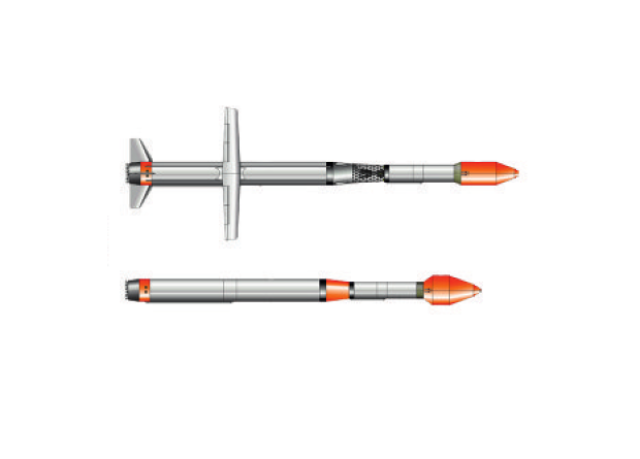Russian experts spoke about the technical characteristics of the IRKUT ultralight launch vehicle and the postponement of its first launch to 2024. The rocket will be produced in two versions, one of which will have a returnable first stage with a rotary wing. Depending on the version, the payload mass will be from 398 to 584 kilograms, according to an article published in the journalSpace technology and technologies, which drew the attention of RIA Novosti.
IRKUT is being created on the basis of the Krylo-SV project, which in turn is based on the developments of the Baikal project. In both cases, we are talking about the returnable first stage of the rocket. Unlike the jet-landing scheme popular today among launch vehicle developers (like the Falcon 9), in the Russian project, in addition to the main rocket engine for takeoff, the stage also has a turbojet engine and a wing. After the separation of the first stage, the wing turns, it returns to the spaceport and lands on an airplane on a conventional runway.
After the demonstration of the layout at MAKS-2001, the Baikal project was curtailed and it did not reach flight tests. In the late 2010s, ROSCOSMOS returned to this idea, the project was named "Wing-SV". It was planned from the very beginning to be used in an ultralight rocket, but quite a few details were known about it, except that the rocket would use methane engines and be able to put 600 kilograms into orbit.
The authors of the new article, led by the head of the Plesetsk cosmodrome Nikolai Bashlyaev, revealed new data about the rocket. It will be called "Irkut" and will have two versions: disposable and reusable. It turned out that the payload mass, which was announced initially, refers to a one-time modification. It will be able to launch a cargo weighing up to 584 kilograms into a low Earth orbit with a height of 200 kilometers and an inclination of 51.7 degrees, and for a geostationary orbit the maximum output mass will be 84 kilograms. A partially reusable version with a returnable first stage will be able to output 398 and 60 kilograms, respectively.
Due to the wing, turbojet engine and chassis (it is assumed that in addition to the wheels, the stage can be equipped with skis), the reusable modification will be noticeably heavier: 25 tons instead of 23.6. The IRKUT will consist of two stages and an upper stage. The stages will be equipped with methane-oxygen engines, and it is planned to use a pair of asymmetric dimethylhydrazine and diazote tetraoxide in the upper stage.
From the article it also became known about the next postponement of the first launch. In 2018, the first flight was planned to be carried out in 2022, in 2020 the developers were already talking about 2023, now the first flight tests are scheduled for 2024.
It is worth noting that at the end of September, ROSCOSMOS published an annual report on its work, where the new name of the rocket, Irkut, was mentioned for the first time. It also became known from it that the rocket is planned to be used with a relocatable launch complex. At the same time, it is unknown whether we are talking about a mobile launcher, like mobile ICBM complexes, or about a relatively quickly deployable, but still stationary complex like the one used by Astra .
In addition to the ultralight IRKUT with landing in airplane mode, Russia is also developing a medium-class sOyuz-7 rocket (aka Amur-LNG), which will use the classic method with a vertical landing on jet engines. Unlike SpaceX and other companies, ROSCOSMOS does not plan to use offshore platforms and will instead build stationary ones on the coast of the Sea of Okhotsk.
A reusable version of the ultralight rocket is also being developed by the American company Rocket Lab based on the Electron already used. The first stage of the rocket will return by parachute, and at a low altitude it will be intercepted by a helicopter. At the end of 2020, the company has already tested landing, but on water, without capture by helicopter.
Grigory Kopiev

